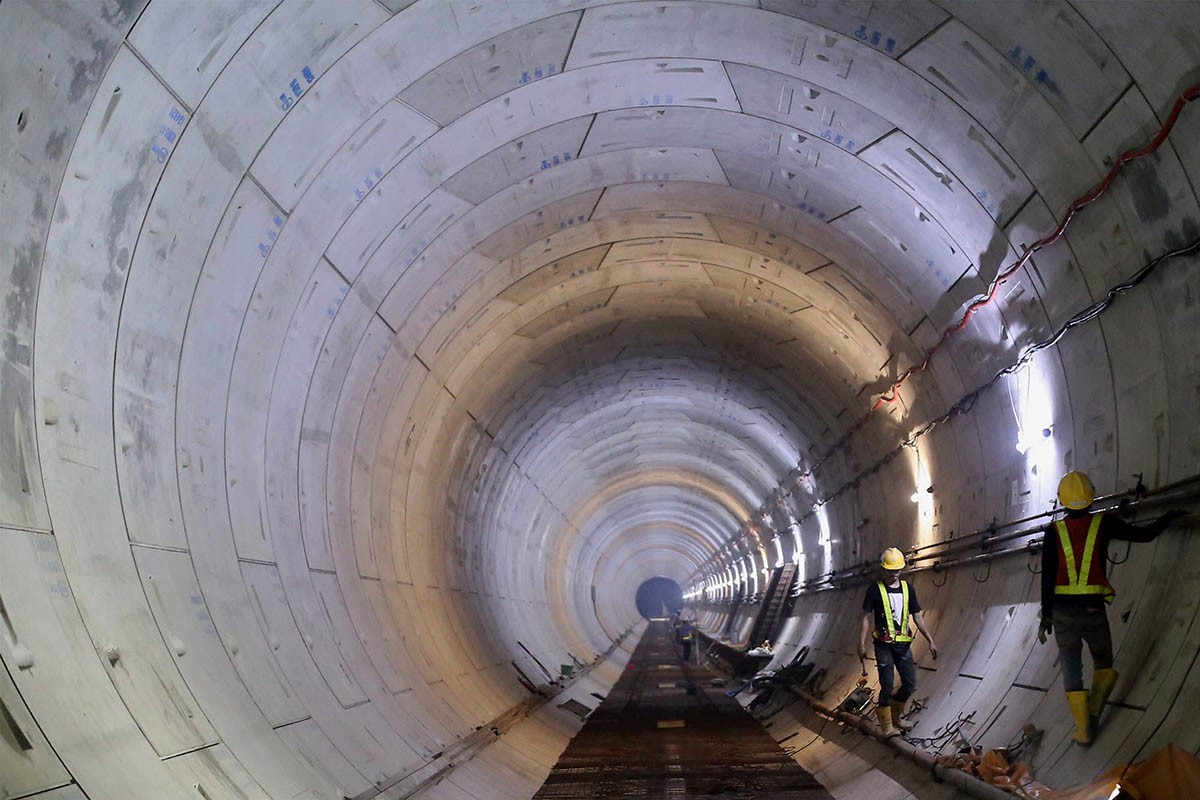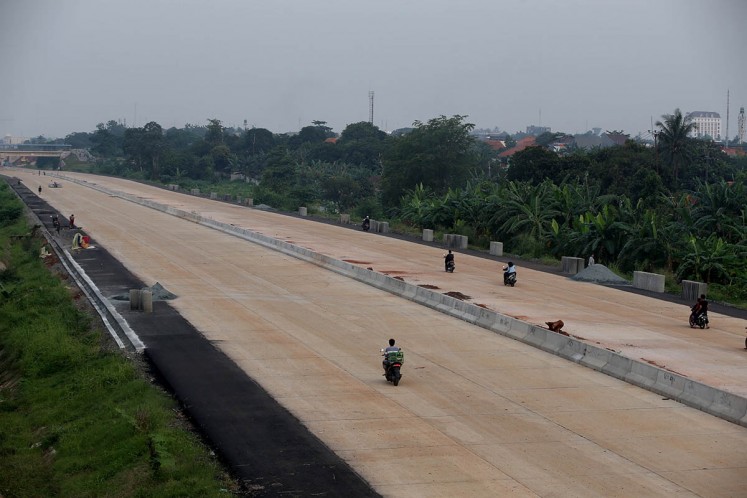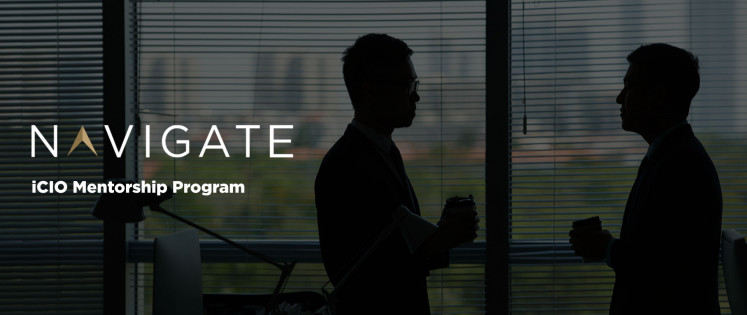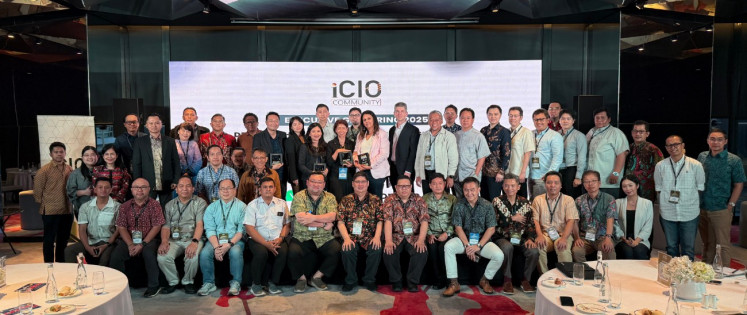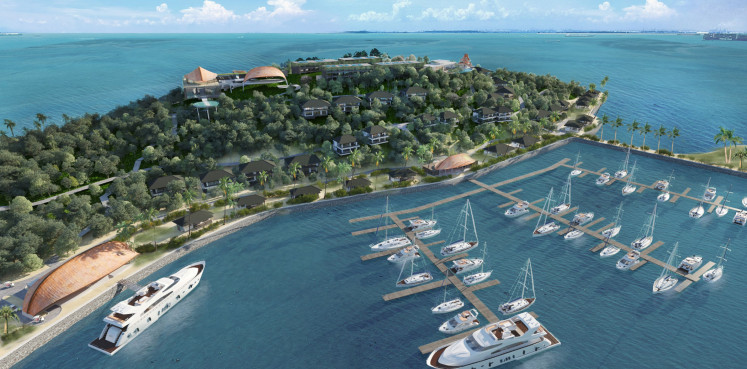Popular Reads
Top Results
Can't find what you're looking for?
View all search resultsPopular Reads
Top Results
Can't find what you're looking for?
View all search resultsInnovative funding methods help boost equity in development infrastructure
Change text size
Gift Premium Articles
to Anyone
I
nfrastructure has become the focus of the President Joko Widodo- Vice President Jusuf Kalla administration right now, as is reflected by the portion that infrastructure development is allocated in the State Budget.
As the years go by, the budget for infrastructure gets bigger and bigger. What was Rp 154.7 trillion (US$11.4 billion) in 2014 grew to Rp 269.1 trillion in 2016. In the 2017 State Budget, this figure had reached Rp 401.1 trillion.
Next year's infrastructure budget is expected to increase further to at least Rp 410 trillion and will be used to realize social justice for the people of Indonesia from Sabang to Merauke.
Eight airports, 865 kilometers of new roads, 25 kilometers of toll roads, bridges spanning 8,695 meters, 620 kilometers of railway track and much else will be built for the prosperity of the nation.
Stagnant infrastructure projects will similarly be given a boost so that the public can feel their benefits. For example, the Bekasi-Cawang-Kampung Melayu Toll Road (often referred to as "Becakayu"), despite the construction being suspended for two decades, finally became operational in November.
Abandoned toll road projects are no longer a sight to be seen since PT Waskita Toll Road acquired PT Kresna Kusuma Dyandra Marga and began work on toll roads in early 2015. Since then, work on these abandoned roll roads have resumed.
The Becakayu toll road isn't simply just an alternative way for people to get to Jakarta or Bekasi. It also adds to the road network of Greater Jakarta. The toll road will also soon be connected to the Wiyoto Wiyono and Jakarta-Cikampek toll roads.
In addition to toll roads, development of mass transportation infrastructure projects like the MRT in Jakarta and the light rail transit (LRT) are still continuing.
By the start of 2019, it is expected that the citizens of Jakarta will be able to enjoy the benefits of the MRT system, the first of its kind in Indonesia.
What's more, infrastructure development has also raised the country's profile on the international stage.
According to the Global Competitiveness Index 2017-2018 report released by the World Economic Forum in September, the country's competitiveness increased from 41st place in 2016 to 36th this year. Infrastructure was used as one of the measuring standards for competitiveness in this index.
However, despite having made strides, the infrastructure sector in Indonesia still needs to improve. According to this very same report, the quality of infrastructure in the country is ranked 52nd of 137 nations. It is still very far behind neighbors such as Singapore, ranked second place, or Malaysia at 22nd.
Increasingly innovative
In order to push for bigger infrastructure development, the government has been hard at work innovating to arrange for more flexible payment schemes. These innovations do not simply rely to the State Budget to build infrastructure.
The private sector is being invited to take a more active role in funding infrastructure. The government hopes that infrastructure development can be accelerated by working together, so that the effects of improved infrastructure can be felt as soon as possible.
The results of a 2014 study by the International Monetary Fund indicated that the rise of investment in public infrastructure will lead to greater economic growth, both in the short and long term. A 1 percent increase in public infrastructure investment in a developing country can increase output by 0.1 percent in the same year and by 0.25 percent in the four years to come.
According to Robert Pakpahan, the Finance Ministry's financing and risk management director general, innovative funding is required to accelerate infrastructural development.
Working together with the private sector, public private partnerships can be used as an alternative means of funding, aside from the state budget and tasking state-owned enterprises. That way, the government can spend more time focusing on developing infrastructure projects that are less attractive to investors, such as drinking water and irrigation projects.
"There are currently already a number of government projects that have partnered with the private sector, such as the Palapa Ring and the Batam power plant," Pakpahan said, during the recent Forum Merdeka Barat 9 (FMB9) media gathering on infrastructure funding, held on Nov. 17 in Jakarta.
Transportation Minister Budi Karya Sumadi echoed Pakpahan's thoughts. He said the diversity of payment systems was good for accelerating transportation connectivity in the nation.
Budi pointed out that the budgetary needs of the transportation sector annually reached Rp 1.5 quadrillion. Of this amount, some Rp 250 trillion comes from the State Budget.
"There is a gap between demand and existing budgets. As such partnerships with the private sector are required," Budi said.
He added that the Transportation Ministry was always pushing for partnerships between state-owned enterprises and the private sector in managing state assets in the ministry's jurisdictional areas, such as airports and harbors. These partnerships serve to improve services, increase economic competitiveness, and boost capital participation for asset development.
The government has classified its infrastructure projects into three different types. First, if a project is not economically feasible, then it will be built solely using state-owned enterprises.
The second category is for projects that are between feasible and not feasible. These will be funded through operational partnerships between provincial governments or state-owned enterprises on the one hand and the private sector on the other.
The last category is for projects that have the potential to benefit the entire economy. These can allow for private sector participation. Managing assets always has its own set of guarantees for the public sector from the government.
So far, according to Budi, 10 airports and 20 harbors will have their management offered to the private sector. The management offers for these airports and harbors will certainly benefit the entire economy.
These airports include Labuan Bajo, Sentani, Radin Inten, Tarakan, Palu, Sabang, Sibolga, and Bengkulu, while the harbors include Bitung, Ternate, Manokwari, Kendari and Biak.
Partnerships of this nature use asset management schemes for state property. The maximum period of operational cooperation is established at 30 years. In addition, all assets are still owned by the state.
It is through these partnerships with the private sector that up to Rp 1 trillion in the State Budget can be saved. These savings can certainly be channeled for other productive needs, such as building infrastructure on the border, outermost and remote regions of Indonesia.
At the FMB9 forum, the president director of PT Jasa Marga, Desi Arryani, said that private-sector funding was good for accelerating the operation of toll roads.
"Jasa Marga has 1,260 kilometers of toll road concessions, 593 kilometers came into operation last year. There are still many kilometers left to pursue and complete," Desi said.
From 2017 to 2019, Jasa Marga also has to open 667 kilometers of new roads with a target of 200 kilometers per year. As a corporation, Jasa Marga has limitations in its capital and debt. Whether it likes it or not, Jasa Marga needs new sources of funding to accelerate toll road development.
With equity of Rp 16.3 trillion, Jasa Marga also has to be careful in determining how much it borrows. Its stockholders can get worried if the company's borrowing is deemed too high.
"We ended up deciding to opt for securitization. We are looking for schemes that don't clash with regulations," Desi said.
The securitization of state assets in toll roads isn't selling assets. It's a way of working together to fund projects.
According to Desi, Jasa Marga has historically had stable financial reports. As a result, the move to securitize future income is a logical step. Prospective investors too can be confident.
In the first phase of securitization, Jasa Marga has released a five-year plan for the Jakarta-Bogor-Ciawi Toll Road.
"We can get up to Rp 2 trillion. In the future, more securitization is possible, as this is just the start. We are testing the market," Desi said.
Aside from working with the private sector, Jasa Marga is also making subsidiaries more independent in searching for funding, such as by selling obligations on a project basis, as has been done with the JORR W2 (Meruya-Ulujami) toll road.
"Securitization of assets only sells future income. It doesn't sell the assets. The assets securitized by Jasa Marga are toll roads that have had stable incomes for years and can be relied upon by investors," Desi added.
In other words, the assets remain secure in the hands of the government. But the government can't handle infrastructure development all on its own. It needs to partner with others, including in the private sector.
All sectors of society can benefit from infrastructure. It can allow the idea of social justice and equity to be achieved for all people, from east to west in Indonesia.

